Beautiful and Historic China
Atia Nasreen
A few years ago, I had the opportunity to travel in China. I took a package tour with Travel China Guide. I had an amazing experience in my two weeks in China. When we think of China, the first thing that comes to our mind is the Great Wall. But China is a lot more than the Great Wall, just as Egypt is much more than the Pyramids.
I reached Beijing at midnight. I was picked up by a representative from my travel group. There were a few other people in our group who arrived in the same flight. We were taken to the Holiday Inn hotel.
The next day was our free day. A few more people came and joined us from different parts of the world. We had people from USA, UK, and Canada. There were a few people from Australia as well.
We started our tour from the following day. Our first place to visit was the famous Tian’anmen Square. It is an open square in the centre of Beijing and one of the largest public squares in the world. It was originally built in 1651 and covers 100 acres of land. The place is best known for the 1989 protests and massacre that ended with a military crackdown due to media coverage. 100 000 students gathered to protest the corruption of the then regime and many were crushed under military tank. The place was very crowded. I tried to stay close to my tour guide.

Tianamen Square (photo courtesy Google)
From Tianamen Square, we went to The Forbidden City.
The Forbidden City is the largest medieval wood construction collection in the world. There are more than 90 neighbourhoods, 980 buildings, and more than 8,728 spaces. 24 Chinese emperors resided in the forbidden city. The forbidden city was declared a World Heritage site in 1987.
Our tour guide showed us around.
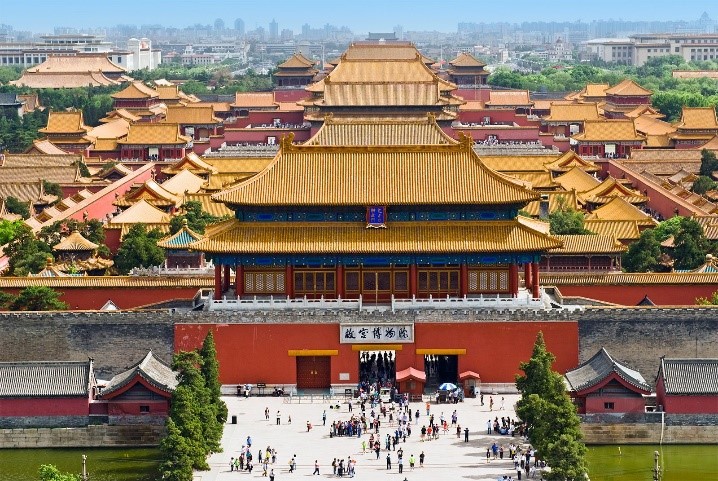
Forbidden city (photo courtesy Google)
From theforbidden city we were taken to a restaurant for lunch. We had a le carte lunch which was delicious.
After lunch we visited The Temple of Heaven. Situated in the southeastern part of central Beijing, The Temple of Heaven is a complex of imperial religious buildings. The complex was visited by the Emperors of the Ming and Qing dynasties for annual ceremonies of prayer to Heaven for a good harvest. We went all the way up. The architecture of the building impressed me.
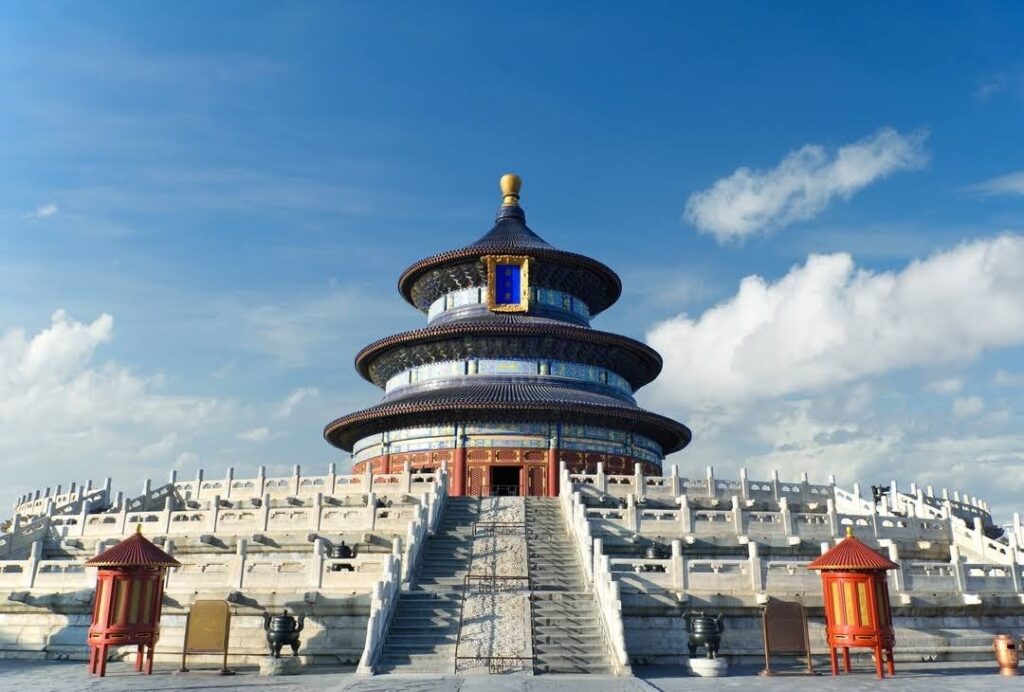
(Photo courtesy Google)
In the evening, we were taken to a lively Kung Fu Show at Red Theatre. I enjoyed the show.
Next morning, our first place of visit was The Great Wall. China is well known for its Great Wall, which is a one of the seven wonders of the world. So far, I have seen 5 and now I am going to see the 6th one. The month was April, it was springtime and we saw beautiful flowers around.
The Great Wall of China is the longest man-made structure in the world. Originally conceived by Emperor Qin Shi Huang in the third century B.C., it is a series of fortifications that were built across the historical Northern borders of ancient Chinese states and Imperial China, as protection against various barbarian nomads. The wall is over 21,000 km long and has an average height and width of about six to eight meters.

Walking along the Great Wall of China
As I was travelling alone, I was paired up with another lady, Grace, visiting from USA. We were given one and half hour. So, we went up the wall for 45 minutes and then came down. The path was very slippery as the rocky floor was very smooth. We walked very carefully, stopping every now and taking photos.
After visiting the Great Wall, we were taken to a Jade Factory. From historical times, China was well known for its nephrite jade found on the riverbeds of Yarkland and Hotan in northwestern China. Jade in these places was found in the form of boulders. Combined with the Chinese craftsmanship, so many beautiful things were made using jade. I saw things made of Jade on various shades of green.
After lunch we went to visit Sacred Way and the Ming Tomb.
The Ming Tombs are the mausoleums of the 13 emperors of the Ming Dynasty dated from 1368 to 1644. It is located 50 kilometres northwest of Beijing City. Leading to the mausoleum, is the sacred way. According to Chinese belief, The Emperor is the son of heaven who came from heaven through the sacred way and would return to heaven through this road. The sacred way is lined with stone statues including human figures and animals like lion, camel, elephant, dragon, phoenix, tortoise, and horse. The place was very quiet which I loved.

The sacred way (photo courtesy Google)
From Sacred Way and Ming Tomb, we were taken to The Beijing National Stadium also known as Birds Nest due to its appearance from outside. The stadium was made for use during the 2008 Summer Olympics and Paralympics. The stadium cost US$ 423 million.
After our visit to the Stadium, we were brought back to our hotel.
Thenext Day, our first place of visit was theSummer Palace.
The Summer Palace was an imperial garden in the Qing dynasty and a vast ensemble of lakes, gardens and palaces in Beijing including Longevity Hill, Kunming Lake, and Seventeen Hole Bridge. In November 1998, the Summer Palace has designated a World Heritage Site by UNESCO.
One of the features of the Summer Palace that impressed me was the long corridor. It is the longest corridor in Chinese garden and parallel to the Kunming Lake and Seventeen Hole Bridge. It is 728m long. Along the corridor are 14,000 paintings, which depicted episodes of Chinese classical literature, folk tales, both historical and legendary figures and famous Chinese buildings and landscapes along with flowers, birds, fish, and insects.
Another impressive feature of Summer Palace is the Marble boat. The Marble Boat was built in 1755 with a base made of huge stones. The base supported a wooden pavilion in traditional Chinese style imitating sailing boats of Emperor Qianlong (1711-1799). It was painted white to give the impression of marble.
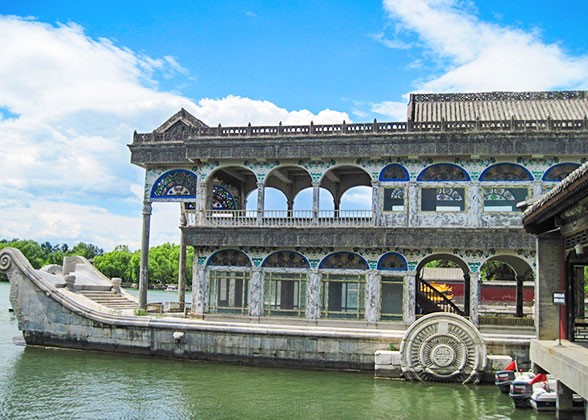
The Marble Boat of Summer Palace (photo courtesy Google)
From the Summer Palace we were taken to a Pearl Store. We saw pearls with different colours and size. We also saw many other objects made of pearl shells. Chinese Artwork was impressive. In the showroom, they had different types of jewellery. I bought some jewellery made of pearl and jade. They were beautiful.
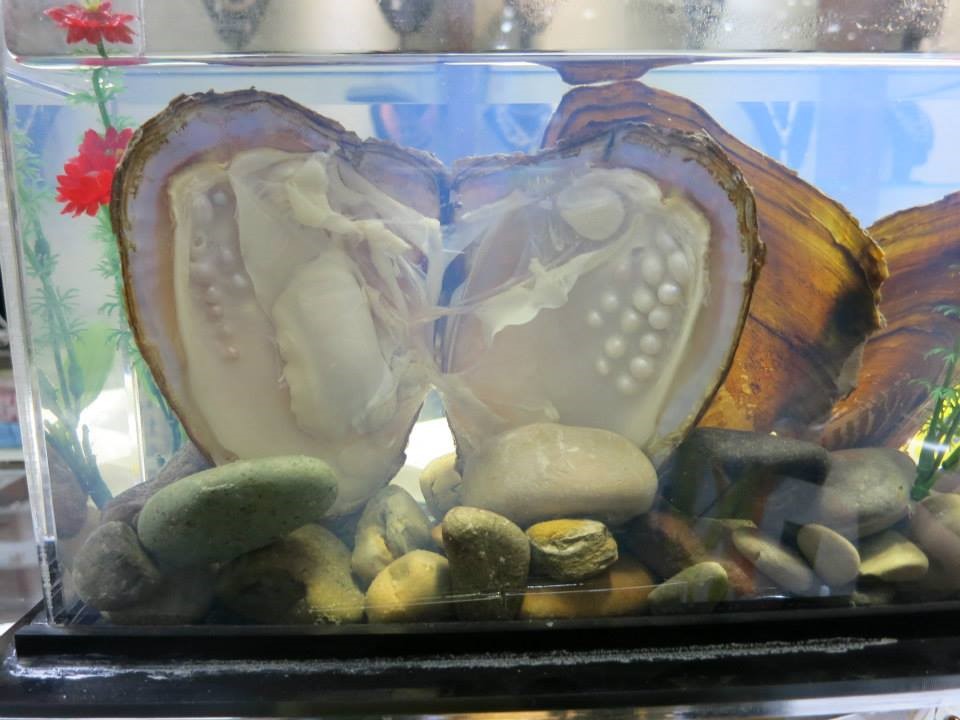
I was extremely impressed to see this one. Never knew that one Oyster can contain so many pearls.
From the pearl store we were taken to a restaurant for A Le Carte lunch which was delicious.
After lunch, we were taken to Hutong. The whole experience was very interesting for me. We were taken by bus and close to Hutong, we got down and took traditional Chinese transport like rickshaw. It was fun. We got down in the old China Town which was kept its traditional way of life 300 years ago.
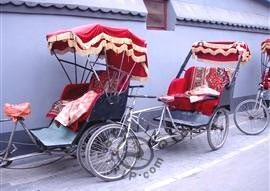
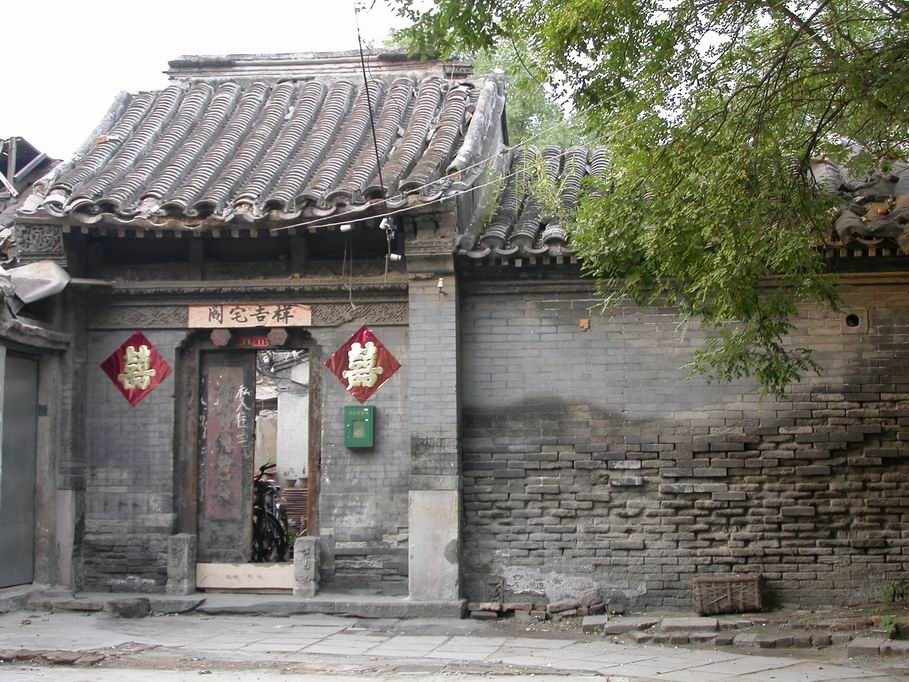
Entrance to a house
We walked around to have a look and then went inside a house as guests. We were shown the traditional way of living in China. We were offered some refreshments by the host family. After spending some time there, we were taken back to our hotel.
In the late afternoon we were taken to the Airport to take a flight to Xi’an. We checked in at Hotel Shangri-la Golden Flower hotel.
TheNext morning our first visit was to Terracotta Warriors and Horses Museum and a Pottery-making House.
It is called the 8th wonders of the world. The “Terracotta Army and Horses” is a collection of terracotta sculptures depicting the armies of the first emperor of China, Qin Shi Huang. It was built and buried with the emperor in 210-209 BC. They were built to protect the emperor in his afterlife. The Terracotta Army was discovered on 29 March 1974[3] to the east of Xi’an by a group of farmers digging a water well. This most recent discovery prompted Chinese archaeologists to investigate, and they unearthed the largest pottery figurine group ever found in China. I read a lot about the place, so it was a great feeling to be there finally.
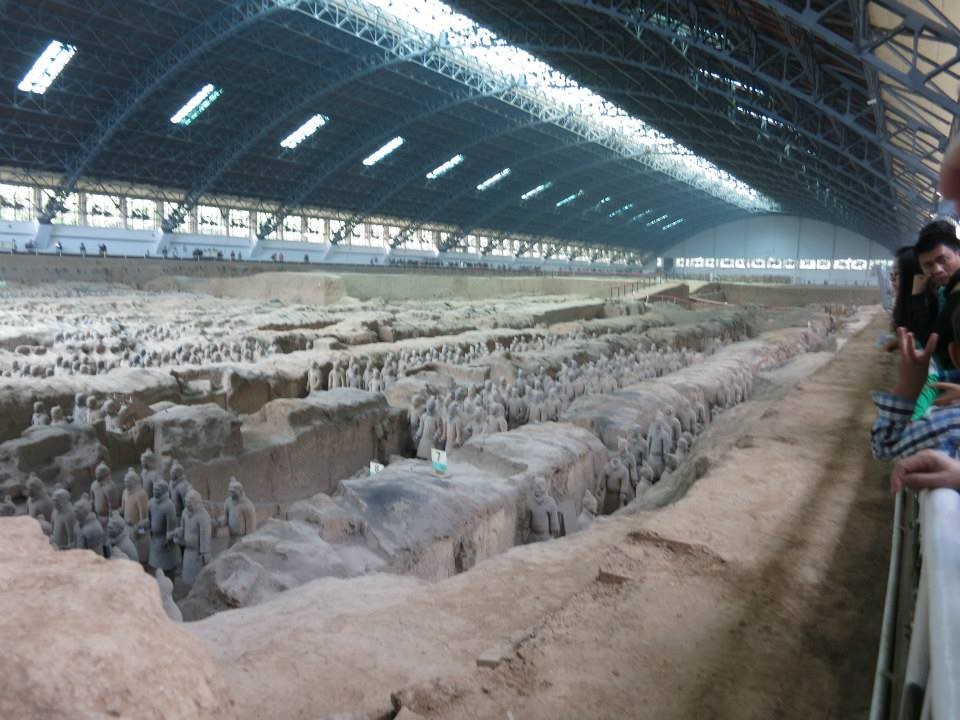
As we entered the hall, our tour guide told us the best place to view the Terracotta warriors.
From there, I walked all the way to the other end and took many photos.

From The Terracotta Museum we were taken to a pottery making place. We saw the Chinese way of making beautiful potteries.
For lunch we were taken to a Chinese family home where food was cooked, and we were going round to see it. We were a group of 16 people, and we loved the experience. The food was delicious.
After lunch, we went to visit the Small Wild Goose Pagoda. It is one of the Buddhist cultural sites in Xian, with a very interesting architecture. Each of its 13 tiers is connected by spiral stair with the entrances from north and south. The building gets narrow with every tier, getting round at that.
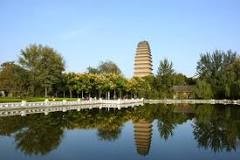
The Small Wild Goose Pagoda (Photo courtesy Google)
We spent a splendid evening being entertained by the Tang Dynasty Music and Dance Show. The show was absolutely mind blowing with music and dance. The show also included a dumpling dinner. As I opted for vegetarian dumpling, they served so much of it that the whole group could enjoy them.
Next morning, we went to visit the ancient Chinese City Wall. Xian city wall is another magnet of Xian. It is the most complete city wall that has survived in China as well as being one of the largest ancient military defensive systems in the world. It was enlarged in Ming Dynasty (1368-1644) from the city wall initially built in Tang Dynasty (618 -907). King was told, “If you want to be a good King, you have to protect your people and give them food.” So, King built this enclosure. Now it is 12 meters tall, 12-14 meters wide covering 14 kilometres in length with a deep moat surrounding it. It was another amazing place to be. Some people from our group cycled on the wall. I was very happy to walk around and enjoy the view from the top.
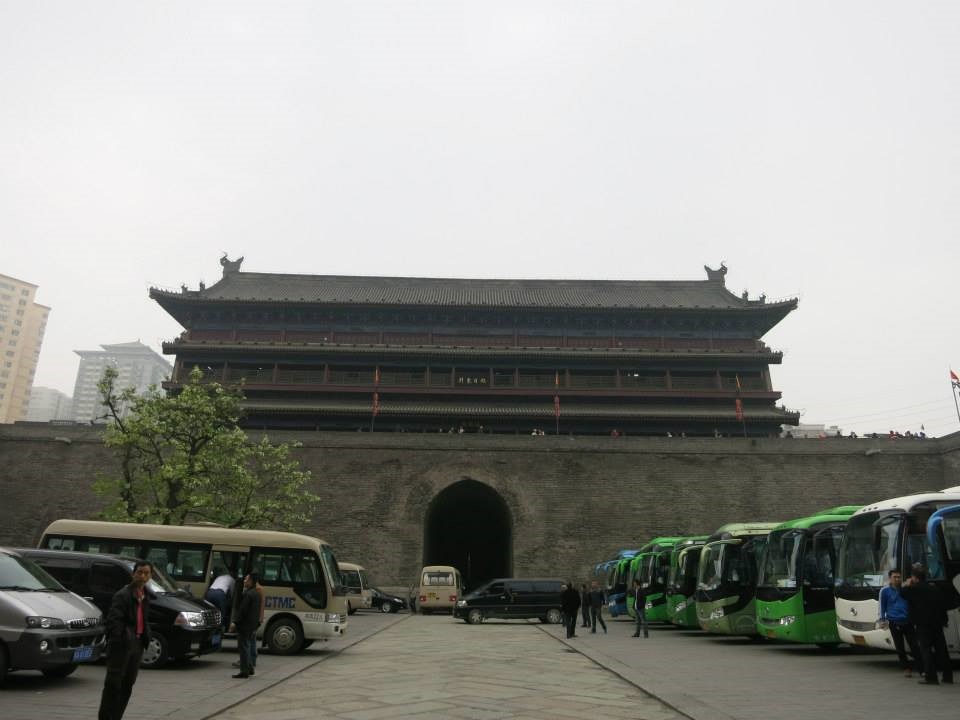
The Entrance of The City Wall.
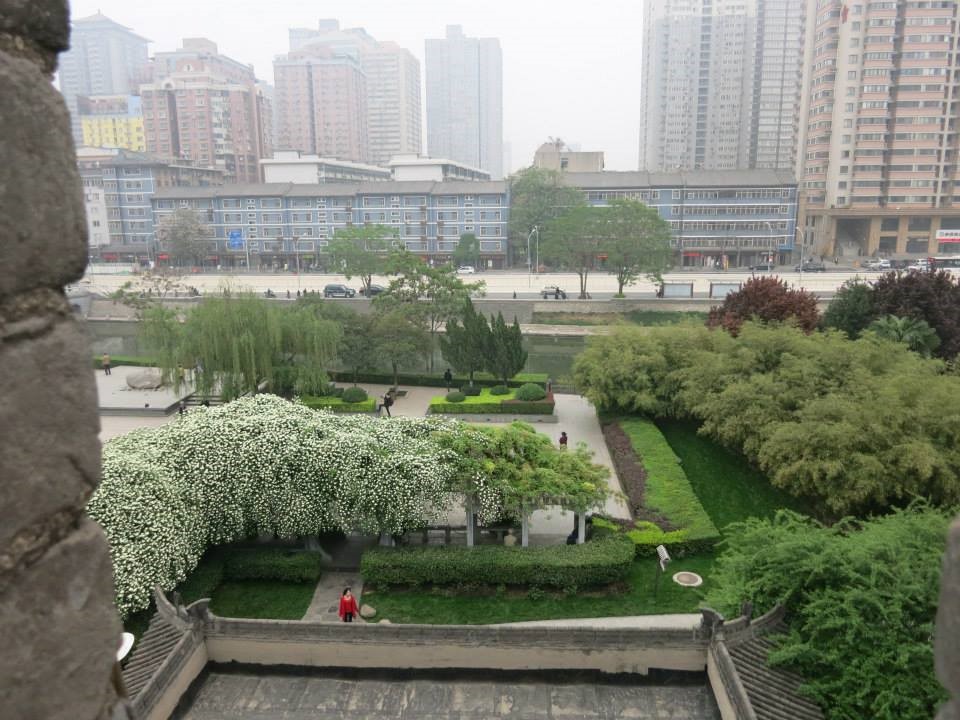
View from the top of The City Wall

Some people opted to bike ride on the wall.
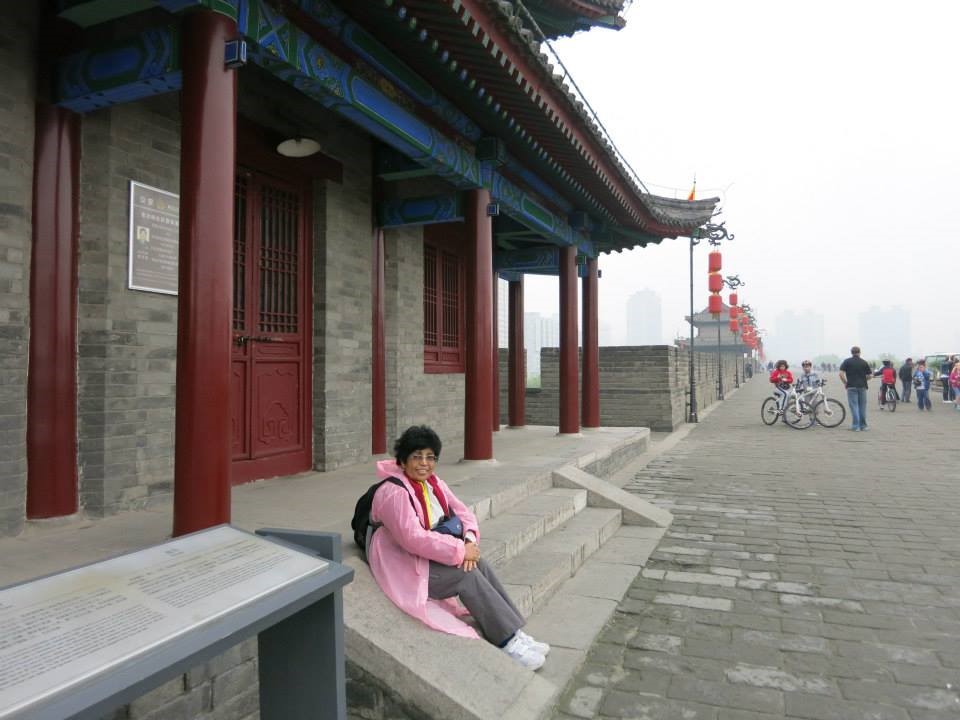
I was enjoying my time on the wall. It was a place so unique.

Walking around with other tourists on the City Wall was a great experience.
In the afternoon we flew to Chongqing to start our three-day Yangtse river cruise.
We boarded the ship. My room was on the top floor with a large balcony. I enjoyed the beautiful views and the relaxing time. From my childhood I read so much about this river. So, it was a great experience for me.
Next morning, after breakfast our first shore tour was at Shibaozhai Pagoda. We were taken there by bus and then we walked from the Gate.

Shibaozhai Pagoda is originally built in late Ming Dynasty (1368-1644) on the Northern Bank of Yangtze River. It is 45 kilometres from Zhong county, Chongqing City. The word Shibaozhai meant Stone Treasure Fortress. It is now a nationally protected culture relic site and an important tourist attraction. Renowned for its unique shape and wooden construction with most storeys in China, Shibaozhai is listed in the Eight Strange Structures of the World. Standing 56 meters high, the spectacular 12 storey wooden Shibao pagoda was built leaning the hill with its overhanging eaves. Originally it was a 9-storey building symbolizing nine tiers of the sky (in Taoism). The three-storey top pavilion was added in 1956 when the pagoda was repaired. The pagoda gate was a masonry structure higher than 6 meters.
Our tour guide showed us around. Some people went inside. The surrounding was beautiful, and I opted to walk around enjoying the beautiful view.
In the evening, before dinner, we had captain’s welcome speech.
Thenext morning, we were taken for a small boat trip. We disembarked from our cruise ship, boarded a small boat (about 300 seaters) and went to Shennong Stream. TheShennong Stream is a 60 kilometer long small tributary of the Yangtze River. It is famous for is picturesque scenery and another important National Tourist attraction. The place is filled with history, culture, and Nature’s splendour.
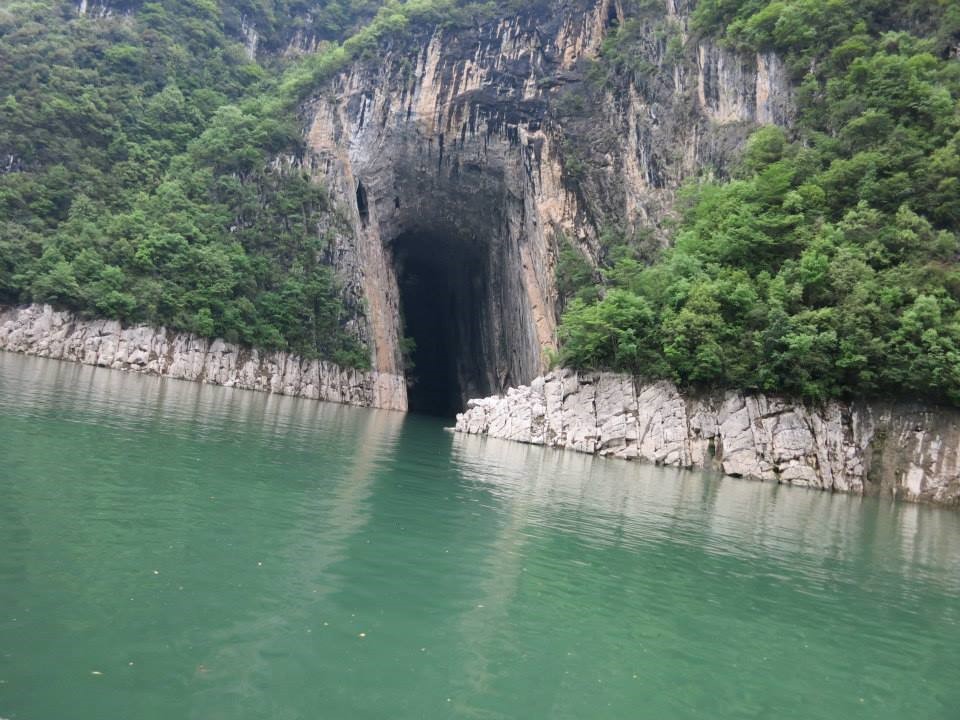
We went past many caves.
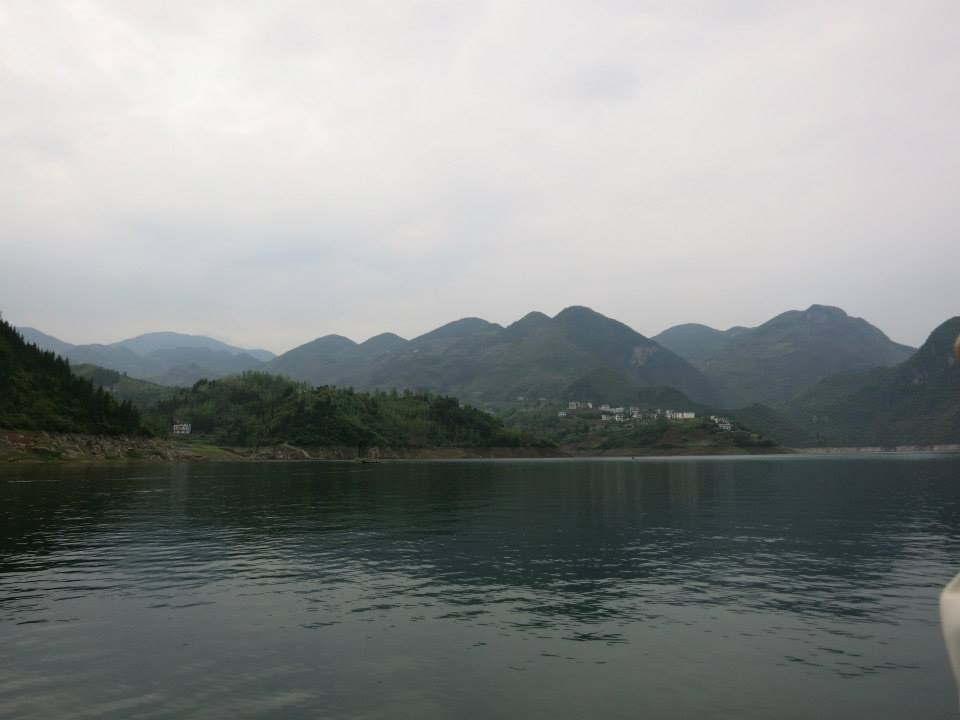
The surrounding view was breathtaking.
We went past ancient hanging coffins. The hanging coffin burial is a mysterious funerary practice known in ancient populations. The dead were placed high on a cliff inside a wooden coffin or in a natural cleavage in the rock. The belief behind hanging coffins is that the moving bodies of the dead higher up will bring them to their ancestral spirits.
In the boat, we were served with refreshments and tea/coffee which I loved.
Our boat brought us to the sampan terminal.
We went for a sampan ride. It was a wonderful experience. We were in small sampans. The sampans were floating past one another. We saw many sampans going back after their trips. It was a wonderful experience.
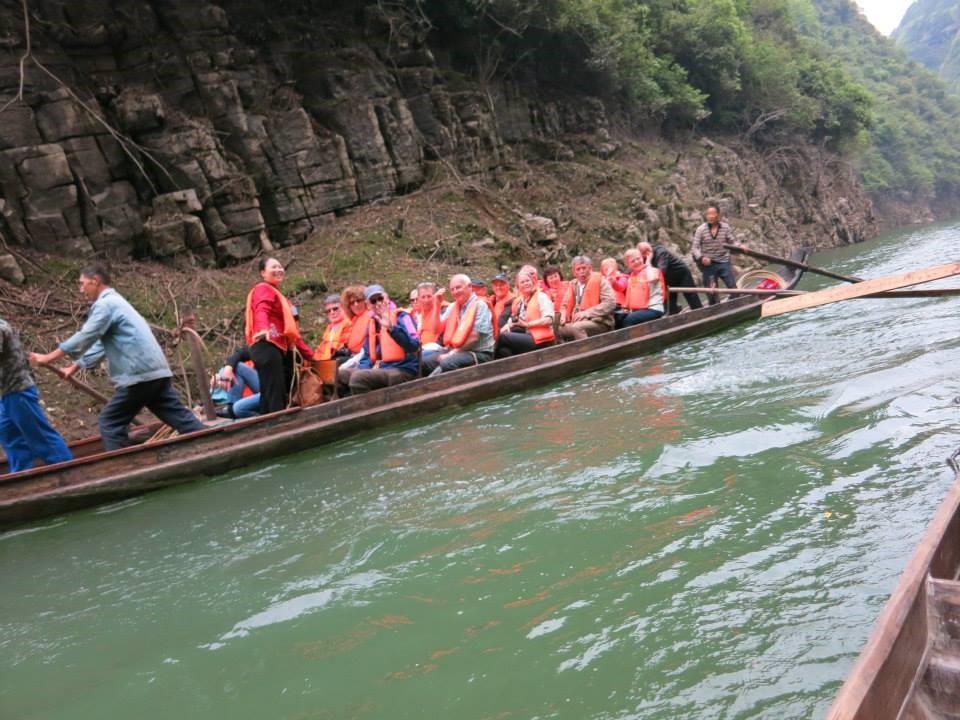
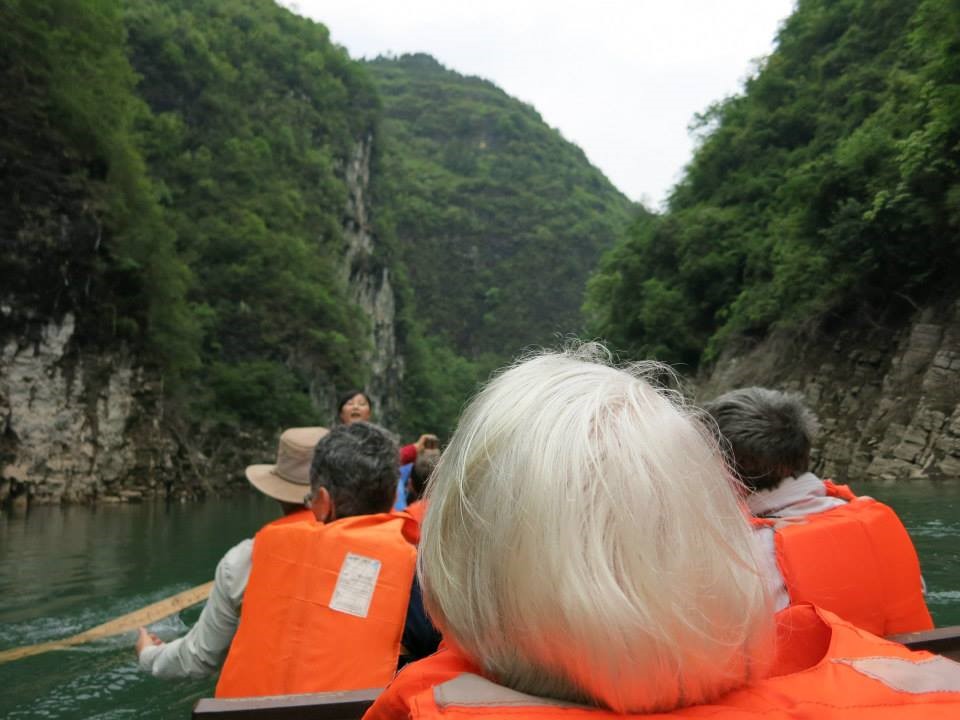
After about an hour of sampan ride, we came back to our ship.
The next day, we were cruising through the western section of Xiling Gorge. I went to our viewing deck and enjoyed the beautiful view.
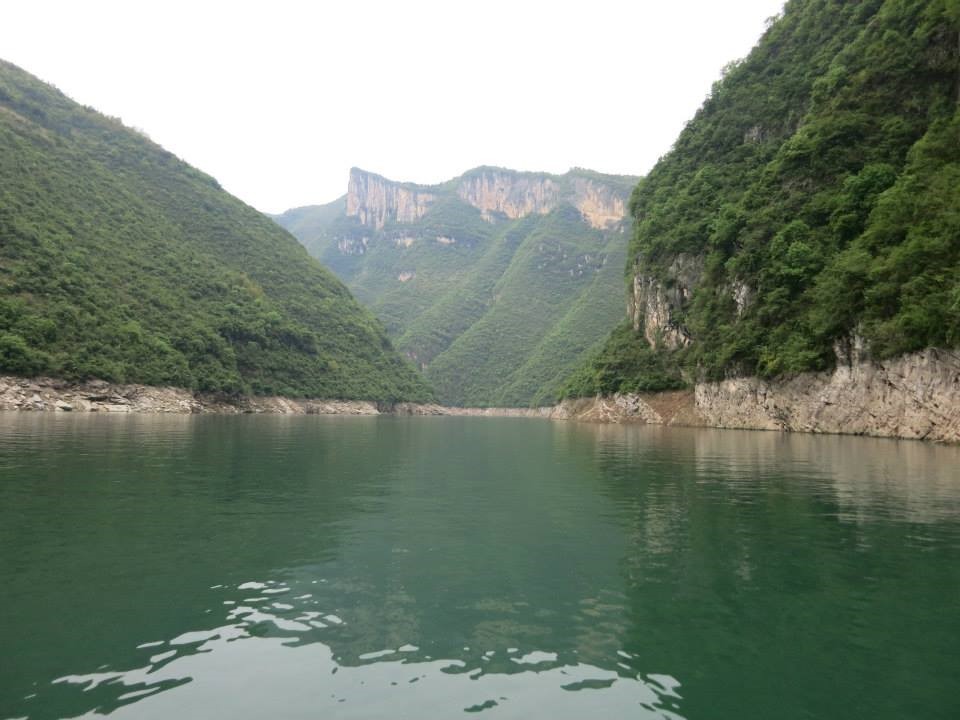
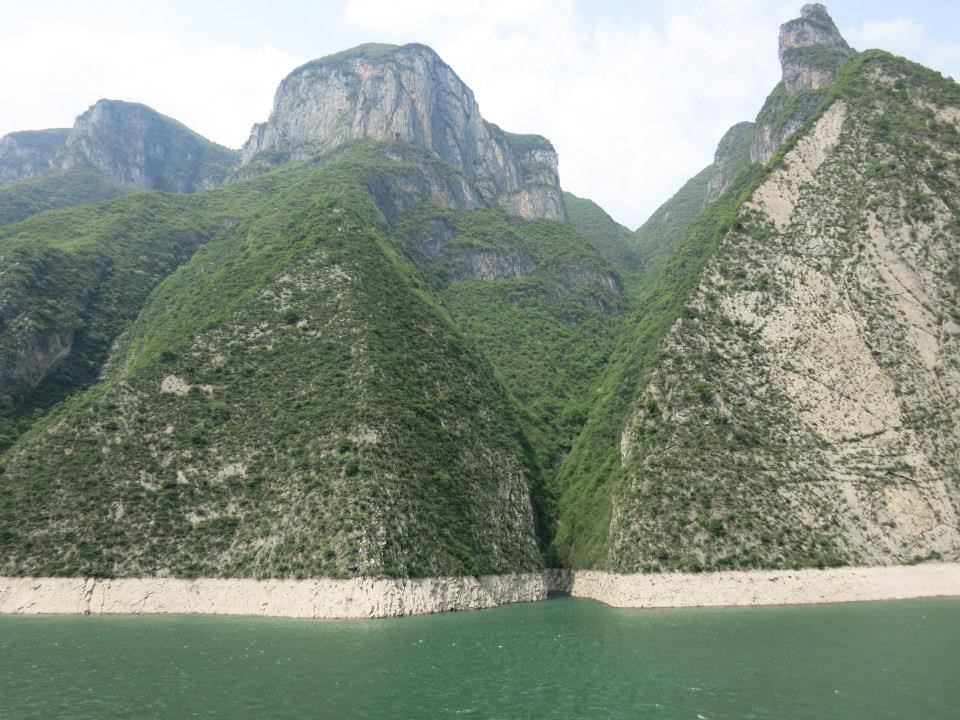
After lunch, I came to the viewing deck again to enjoy the five-step ship lock. I took a good seat and kept taking photos. The view was breathtaking all along.
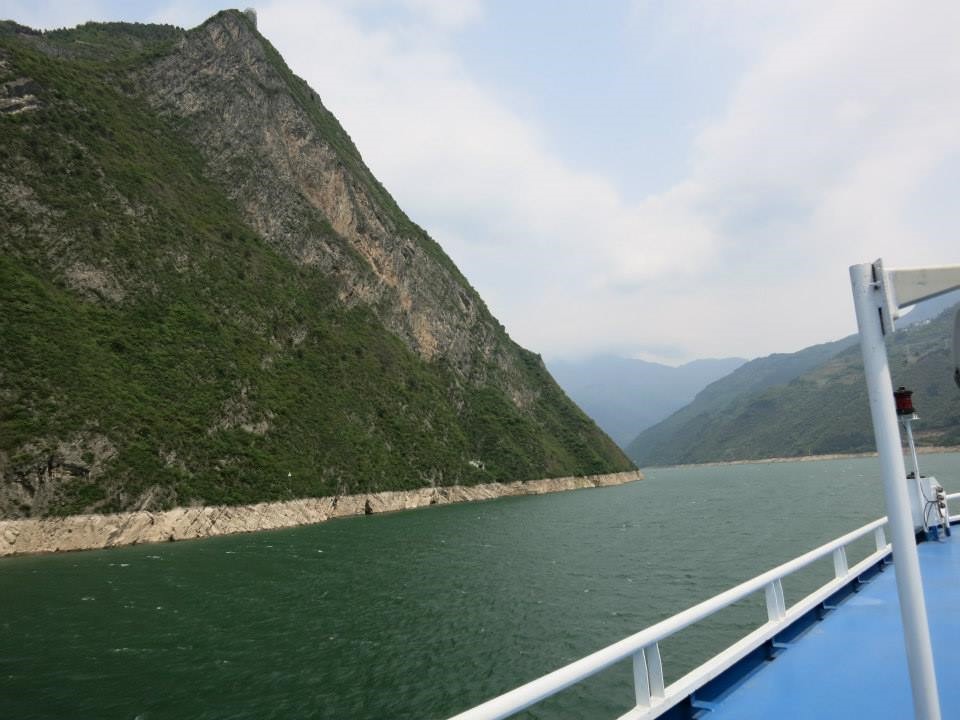
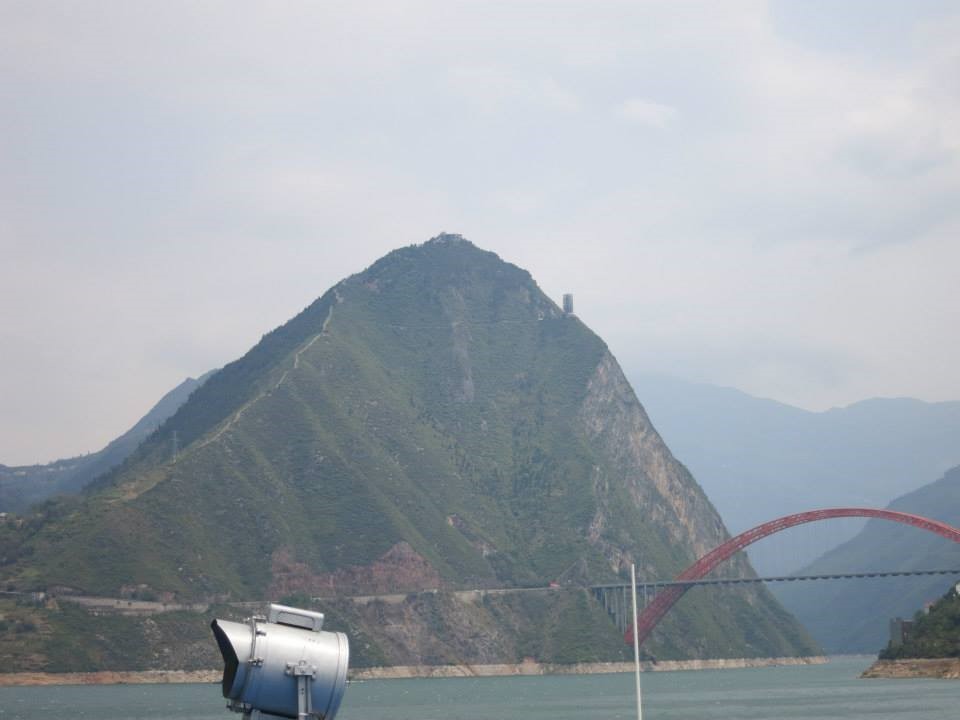

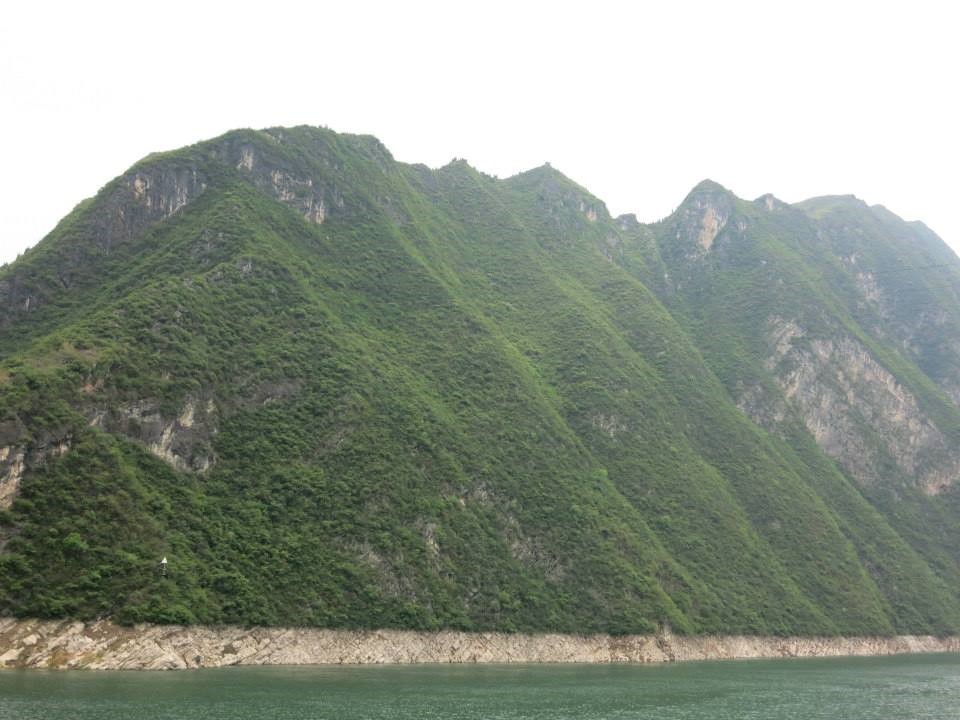
The next morning, we disembarked our cruise ship and went to visit the Three Gorges Dam.
This Dam in China is the world’s largest hydroelectric facility with generating capacity of 22,500 megawatts.
After spending some time at the Dam site and the visitor’s centre, we left the place and went to Yiling by our coach. We had our lunch is a restaurant which was delicious. After lunch we went to the Airport to fly to Shanghai. We checked into our hotel Grand Mercure Shanghai Zhongya.
Thenext morning, our first place of visit was Shanghai Museum. Shanghai Museum is one of the finest in China with artifacts from Neolithic period onward. The museum houses over 120,000 precious historical relics. I have seen museums in many places in the world, however, I was impressed with the collection in the Shanghai Museum.
From the museum, we went to visit the Yuyuan garden.
Yuyuan Garden is an extensive Chinese Garden reflecting Jiangnan Garden architecture in the Ming and Qing Dynasties. Our tour guide showed us around. It was a beautiful place.
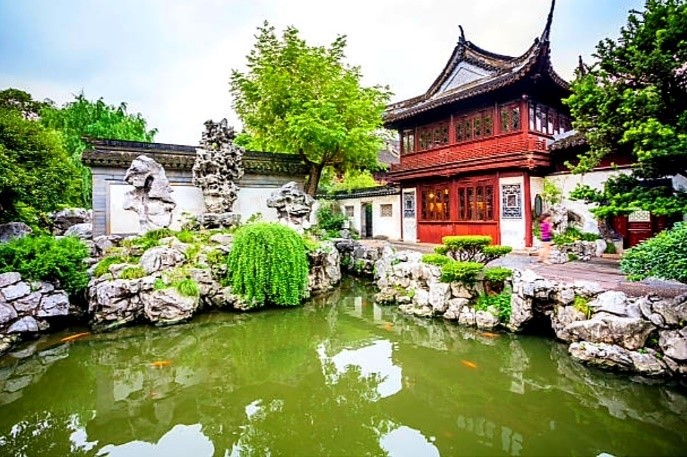
A section of Yuyuan Garden (photo courtesy Google)
From Yuyuan Garden, we went to visit a silk factory. We went through the entire process of producing silk, which I have already seen in many other parts of the world. It was nice to see the Chinese silk. The finished products looked beautiful with Chinese finishing.
We stopped for our delicious lunch in a restaurant and after lunch we went to visit the Bund, Nanjing Road and an ancient cultural street, Tianzifang which developed from a local residential area to a new art zone.
After returning to our hotel, we all went to the lobby. Our tour guide bid goodbye to us.
Next morning, after breakfast, I took my flight back to home.
I came home with very rich and happy memories of an amazing place.